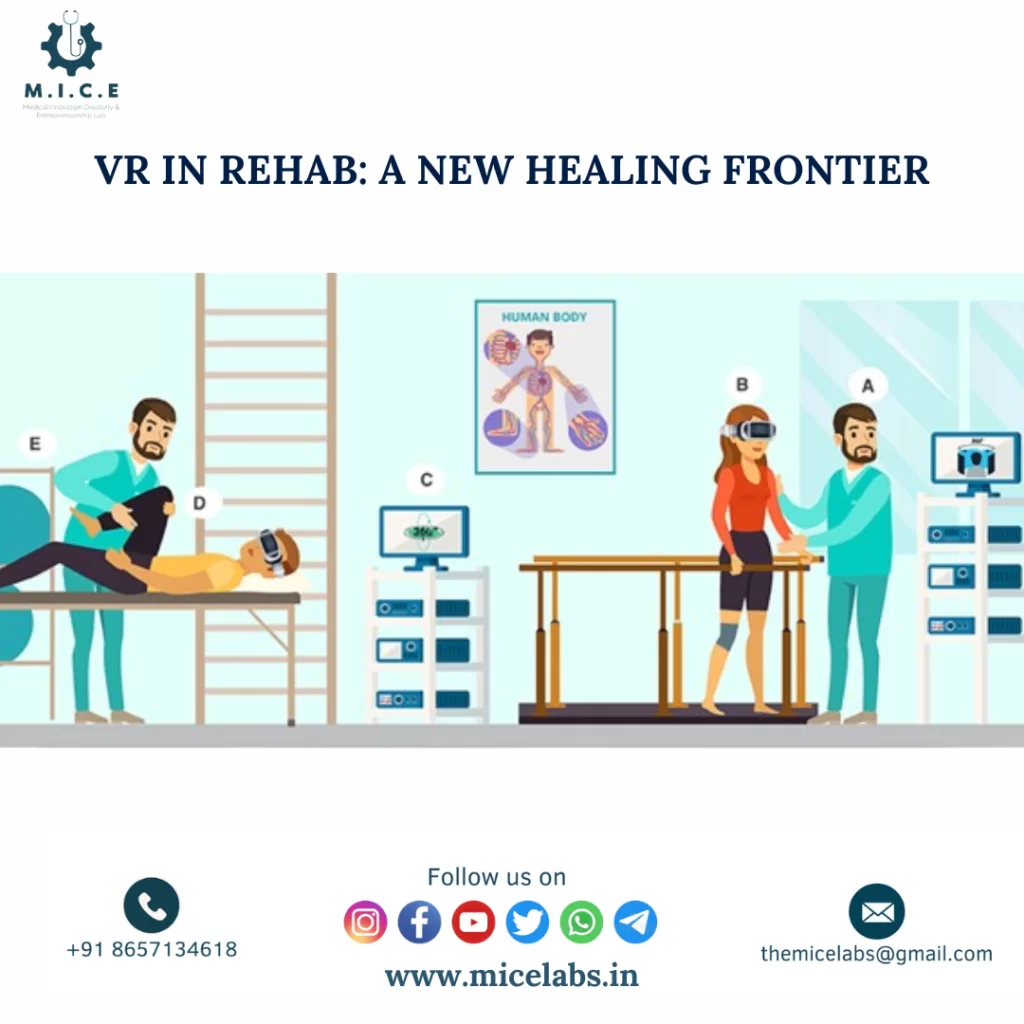Virtual reality (VR) is transforming various fields, and healthcare is no exception. One of the most promising applications of VR in healthcare is its integration into physical rehabilitation. This innovative approach has the potential to revolutionize how patients recover from injuries and surgeries, manage chronic conditions, and improve their overall physical health. In this blog, we’ll explore how VR is being used in physical rehabilitation, its benefits, challenges, and future prospects.
The Role of Virtual Reality in Physical Rehabilitation: VR technology creates immersive, computer-generated environments that users can interact with. In physical rehabilitation, these environments can simulate real-world scenarios or present engaging, gamified exercises that encourage patients to perform therapeutic movements and activities.
Enhancing Patient Engagement and Motivation: One of the primary benefits of VR in rehabilitation is its ability to enhance patient engagement and motivation. Traditional physical therapy exercises can be repetitive and monotonous, leading to decreased patient adherence. VR, on the other hand transforms these exercises into fun, interactive experiences. For example, patients might find themselves navigating through a virtual forest, picking up objects, or balancing on a beam. This gamification of therapy not only makes the exercises more enjoyable but also increases the likelihood that patients will stick to their rehabilitation regimen.
Providing Real-Time Feedback: Another significant advantage of VR in physical rehabilitation is the ability to provide real-time feedback. Sensors and motion tracking technologies integrated with VR systems can monitor patients’ movements and provide immediate feedback on their performance. This instant feedback helps patients correct their movements on the spot, ensuring that they perform exercises correctly and effectively. It also allows therapists to track progress over time and make necessary adjustments to the treatment plan.
Addressing Common Rehabilitation Challenges: VR can also address some of the common challenges faced in traditional physical rehabilitation.
- Access to Care: For many patients, especially those in remote or underserved areas, accessing regular physical therapy sessions can be difficult. VR systems can be used at home, reducing the need for frequent visits to a clinic. Patients can perform their exercises in the comfort of their own homes while still receiving guidance and monitoring from their therapists remotely.
- Customization and Adaptability: Every patient’s rehabilitation journey is unique, requiring personalized treatment plans. VR technology allows for high levels of customization and adaptability. Therapists can tailor the virtual environments and exercises to match each patient’s specific needs and progress. As patients improve, the difficulty level of the exercises can be adjusted accordingly, ensuring continuous challenge and growth.
The Future of VR in Physical Rehabilitation: The future of VR in physical rehabilitation looks promising. As technology continues to advance, we can expect to see even more sophisticated VR systems with enhanced capabilities.
Integration with AI and Machine Learning: The integration of artificial intelligence (AI) and machine learning with VR can further enhance rehabilitation outcomes. AI can analyze large amounts of data to identify patterns and predict patient progress, allowing for more personalized and effective treatment plans. Machine learning algorithms can also help in refining VR environments and exercises based on patient performance and feedback.
Expanding Application: While VR is already being used for a variety of physical rehabilitation purposes, its applications are expected to expand further. For instance, VR can be used for cognitive rehabilitation, pain management, and mental health therapy, providing a holistic approach to patient care.
Learning Resources:
- VR in Physical Therapy: A Comprehensive Guide
- The Role of Virtual Reality in Rehabilitation
- AI and VR in Healthcare: Future Prospects
Conclusion
Integrating virtual reality into physical rehabilitation offers numerous benefits, from increased patient engagement and motivation to improved access to care and personalized treatment plans. As technology continues to evolve, VR is set to become an integral part of rehabilitation programs, helping patients recover more effectively and efficiently. Virtual reality is revolutionizing physical rehabilitation by making therapy more engaging, accessible, and personalized. The future holds even greater promise with advancements in AI and machine learning.
#Virtualreality #Physicalrehabilitation #VRtherapy#Patientengagement #rehabilitation #Remotephysicaltherapy #Personalizedrehabilitation #VR #AIandVR #Healthcare #FutureofVR #Therapy

